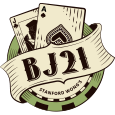Poisson Props

Sharp Sports Betting is a tool for those interested in winning money at sports betting. The book explains the most common sports bets, what all the numbers mean, and the mathematics behind the numbers.
Prospective bettors should know the basic principles of sports betting. You should not be betting online or anywhere else without this fundamental knowledge.
Many casinos offer proposition or prop bets for big events such as Super Bowls. Prop bets are limited only by the imagination of the linesmakers. Prop bets can be on anything.
Sportsbooks set up prop bets to attract more dollars of action and to bring in bettors who just want to peruse large numbers of bets. It seems to work, at least for in Las Vegas, sometimes known as prop-bet heaven.
Three-Step Process
Evaluating a prop bet is a three-step process. The first step is to make a prediction of what is likely to happen. The second step is to assign probabilities to both sides of the prop. The third step is to quantify your edge so that you can decide whether to place a bet.
Step 1: Prediction
To predict the likely outcome, look at past performances. Look at matchups. Consider injuries. Look at weather reports. Consider motivations. Look at anything you can think of that might affect the prop. The linesmaker who thought up the prop probably thinks up several prop bets per hour. If you devote enough time to analyzing enough props, you surely can find props where your prediction differs from the line posted in the sportsbook.
You are looking for props where the number of occurrences you expect is different from the number of outcomes specified in the prop. For example if a prop allows you to bet over or under 2.5 of something or other, and you think the average number of that something ought to be 1.5, then you can move on to step 2.
Your prediction represents an average value, and the actual number of occurrences during the game may be greater or less than your prediction. Technically what you are looking for is the mean.
Step 2: Assign Probabilities
Completing step 1 means you have a prediction, a number of something or others that you think will occur. You also have the description of the prop. Now you must figure out the probability that each side of the prop will win.
If, for example, you predict 1.5 and the prop allows you to bet over or under 2.5, step 2 is figuring out how likely the under 2.5 is to win. It’s all mathematics. For this example, the answer is 81 percent. Under 2.5 means 0 or 1 or 2, and those happen 81 percent of the time when the average is 1.5. Over 2.5 happens only 19 percent of the time.
This may seem like magic, but by the time you devour the information presented in this series of articles, you will be able to perform such magic yourself.
Step 3: Quantify Your Edge
Completing step 2 means you have a probability that a particular bet will win. You can compare that to the terms of the prop to determine whether you have an edge, and if so what your edge is.
Think of step 3 as shopping for value. It’s the same process you would use to evaluate any financial investment.
You know how much money you will be laying out, you know how much you will be collecting if you win, and in step 2 you have figured out how likely you are to win.
Multiply the amount you will collect if you win by the probability of winning. That gives you the expected value of the payoff.
Then compare that expected value with the amount you will be investing. If the expected value of the payoff is higher, you have an edge. If the expected value of the payoff is the same as the bet, you will break even on average. If the expected value of the payoff is less than the amount of the bet, do not make the bet unless you want to enrich the sportsbook.
This is part of an occasional series of articles.
Excerpted with permission from Sharp Sports Betting by Stanford Wong, edited for this format.












Please log in or register to leave a comment